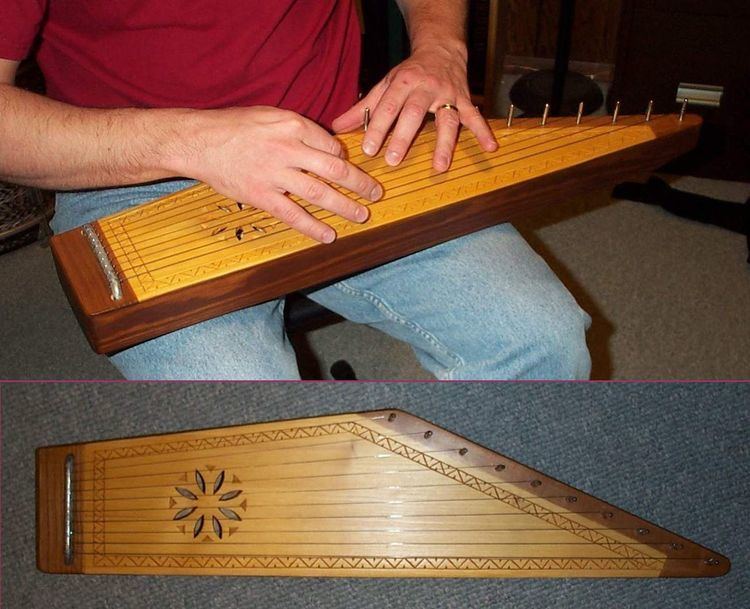 | ||
The kanklės ([ˈkʌŋkles]) is a Lithuanian plucked string musical instrument (chordophone) of the zither family. The instrument is similar in construction and origin to the Latvian kokle, Estonian kannel, Finnish kantele, and Russian gusli; its name is etymologically related to the names of the first three of these instruments.
Contents
Construction
The body of the kanklės is constructed of one trapezoidal piece of hardwood, hollowed out to make a cavity. A thin sheet of softwood (usually spruce) is used to make a sounding board, which covers the body. Sound holes, which traditionally take the shape of a stylized flower or star, are cut into the sounding board, allowing sound to project outward.
At the narrowest side of the body, a metal bar is attached to which the strings made of wire or gut are anchored. The opposite ends of the strings are attached to a row of tuning pegs inserted into holes at the opposite side of the body.
Kanklės is usually rested on the player's lap and played with the fingers or a pick made of bone or quill.
Regional types
Within Lithuania, there are three basic regional types of kanklės, although there are variations within each type and some overlap of areas. Each type has its own playing technique.
